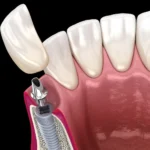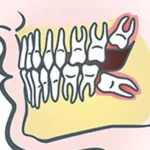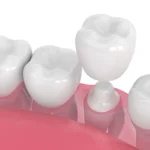Hearing loss is a common concern among seniors, impacting their ability to communicate and engage with the world around them. However, the advancement of technology has paved the way for innovative solutions, with hearing aids being a primary focus for enhancing the auditory experience of seniors. In this comprehensive guide, we’ll explore the world of “Hearing Aids for Seniors,” shedding light on various aspects, from understanding the types of this device available to practical tips for selecting the most suitable option.
Understanding Hearing Loss in Seniors
Before delving into the realm of this device, it’s crucial to grasp the nature of hearing loss in seniors. Age-related hearing loss, known as presbycusis, is a gradual decline in hearing ability that commonly affects individuals as they age. Factors such as genetics, exposure to loud noises over time, and certain medical conditions can contribute to this type of hearing loss.
Seniors experiencing hearing loss may find it challenging to follow conversations, hear high-pitched sounds, or distinguish between background noise and speech. Recognizing these challenges is the first step in addressing the issue and exploring potential solutions like hearing aids.
The Role of Hearing Aids in Senior Care
What Are Hearing Aids?
These aids are small electronic devices designed to amplify sound and improve the overall hearing experience for individuals with hearing loss. These devices come in various types and styles, catering to different degrees of hearing impairment and personal preferences.
Types of Hearing Aids for Seniors
1. Behind-the-Ear (BTE): This type of hearing aid rests behind the ear and is connected to a custom earpiece that fits inside the ear canal. BTE devices are known for their versatility and can accommodate various degrees of hearing loss.
2. In-the-Ear (ITE): This device is custom-molded to fit inside the outer ear. They are suitable for mild to severe hearing loss and offer a discreet appearance.
3. In-the-Canal (ITC): This device is smaller than ITE devices and fit partially into the ear canal. They are less visible and suitable for mild to moderate hearing loss.
4. Completely-in-the-Canal (CIC): CIC devices are the smallest and least visible audible aids, fitting entirely within the ear canal. Mild to severe hearing loss can benefit from them.
How Do Hearing Aids Work?
Hearing aids work by capturing sound from the environment, processing it through advanced electronics, and delivering the amplified sound to the ear. Modern hearing aids are equipped with sophisticated features, including noise reduction, directional microphones, and feedback suppression, to enhance the overall listening experience.
Choosing the Right Hearing Aid for Seniors
Selecting the right hearing aid involves considering various factors, such as the type and degree of hearing loss, lifestyle, and individual preferences. Here are some practical tips for choosing the most suitable hearing aid for seniors:
1. Consultation with an Audiologist: An audiologist can conduct a thorough hearing assessment to determine the type and degree of hearing loss. This information is crucial for recommending the most appropriate hearing aid.
2. Consider Lifestyle and Activities: Different hearing aids cater to various lifestyles and activities. Seniors who lead active lives may benefit from this device with advanced features for challenging listening environments.
3. Comfort and Fit: The comfort and fit of a hearing aid are essential for long-term use. Custom-molded hearing aids provide a comfortable fit, ensuring that seniors can wear them throughout the day without discomfort.
4. Ease of Use: User-friendly controls and features contribute to overall ease of use. Seniors should opt for this device with accessible controls and, if necessary, remote-control options.
5. Budget Considerations: It comes in a range of prices, and while cost is a factor, it’s crucial to balance it with the features and benefits that align with the individual’s needs.
Overcoming Common Concerns
Stigma and Acceptance: Many seniors may feel reluctant to use this device due to concerns about stigma or vanity. It’s essential to emphasize the positive impact hearing aids can have on overall well-being and social connections, encouraging a more positive perspective.
Maintenance and Care: Proper maintenance and care are vital for the longevity and effectiveness of this device. Regular cleaning, battery replacement, and scheduled check-ups with an audiologist can address common issues and ensure optimal performance.
Embracing Technological Advancements
The landscape of hearing aid technology has evolved significantly, offering seniors a range of features to enhance their auditory experience. Some notable advancements include:
1. Bluetooth Connectivity: Hearing aids equipped with Bluetooth technology allow seniors to connect wirelessly to smartphones, TVs, and other compatible devices, providing a seamless audio experience.
2. Rechargeable Batteries: Many modern hearing aids now come with rechargeable batterie, eliminating the need for frequent battery replacements and offering convenience to seniors.
3. Artificial Intelligence (AI): AI-powered hearing aids can adapt to various listening environments, automatically adjusting settings to optimize sound quality and reduce background noise.
Navigating the Journey to Better Hearing
The decision to use this device marks a significant step toward improved auditory health and overall well-being for seniors. Navigating this journey involves not only selecting the right hearing aid but also embracing a positive mindset towards enhanced communication and connection.
The Impact on Daily Life: The positive effect of using this device is far-reaching. Seniors often report improved communication with family and friends, increased confidence in social situations, and a greater overall sense of well-being.
Building Support Systems: Family members, caregivers, and friends play a crucial role in supporting seniors as they adjust to using this device. Patience, understanding, and encouragement can make a significant difference in the successful integration of this device into daily life.
Conclusion
“Hearing Aids for Seniors” represents a transformative solution for addressing age-related hearing loss and improving the quality of life for older individuals. By understanding the types of hearing aids available, considering individual needs, and embracing technological advancements, seniors can embark on a journey to rediscover the richness of sound and enhance their overall well-being. With the right information and support, the path to better hearing becomes a fulfilling and empowering experience for seniors and their loved ones alike.












